 Facebook
Facebook
 X
X
 Instagram
Instagram
 TikTok
TikTok
 Youtube
Youtube
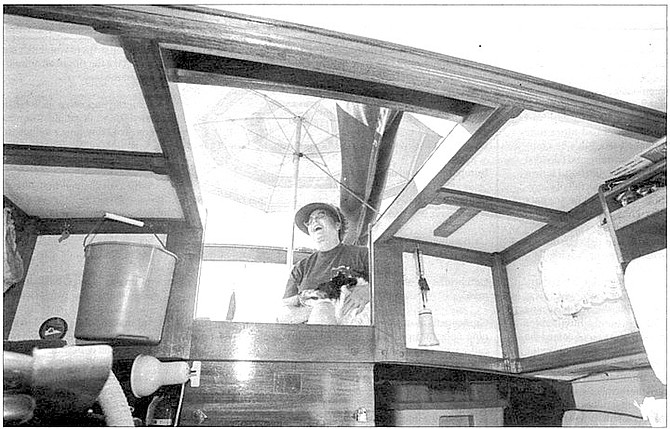
Norm was still alive. From photographs Annie had sent, he identified the skiff as his own creation by the unique placement of ribs just aft of the center thwart. He sent Annie an old photo of Fury and her sister boat Joy side-by-side, taken around 1940. He also put Annie in touch with Fury's first owner, Vic Dixon. Vic had remembered selling Fury to Yank GIs stationed in Brisbane during the early ’40s.
By Nicholas Wolff, Aug. 21, 1997 | Read full article

While Otis holds on to the rabbit’s rear, Scott places his left hand on its back and, grabbing the head with the right, pulls and twists to break its neck and end its suffering. The dying rabbit twitches its hind legs, pummeling Otis in the process. But the young hawk sinks his talons deeper into the cottontail and covers his kill with his wings. “That’s called mantling. He’s doing that to hide it from other birds and animals.”
By Ernie Grimm, March 18, 1999 | Read full article

If there was any play that might have been controversial, it was Smith's third goal in the final game. Catching the disc in the air outside the goal mouth, like a fullback he cradled the disc toward the plane of the goal line. This game situation, where a player running hard toward the goal mouth leaps in the air and lands in the goal, has not been sorted out in the minds of most players and refs.
By Alan Peterson, July 15, 1999 | Read full article
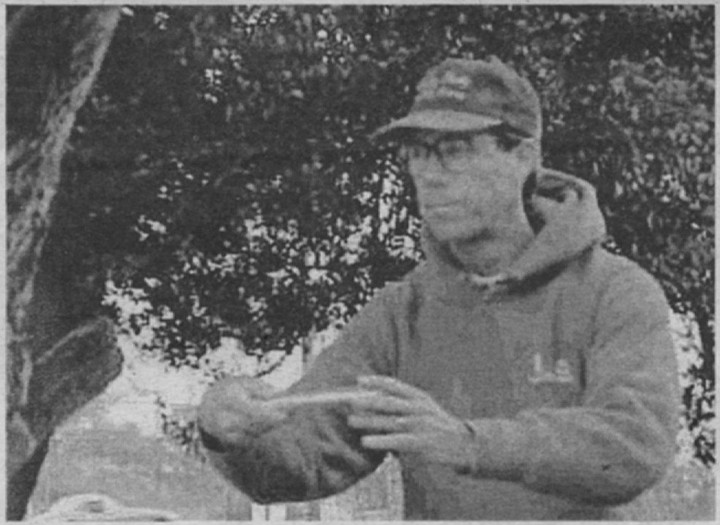
I apply the lesson. It feels funny, like I’m not putting enough effort into it, but the results are good. My disc soars in level flight and floats four feet above the ground for what seems like an unnaturally long time. It’s that boating quality that I’ve admired in Pierson’s shots all day but haven’t been able to emulate until now. Unfortunately, I aimed the shot too far left. On the 16th hole, I overcorrect.
By Ernie Grimm, Feb. 17, 2000 | Read full article
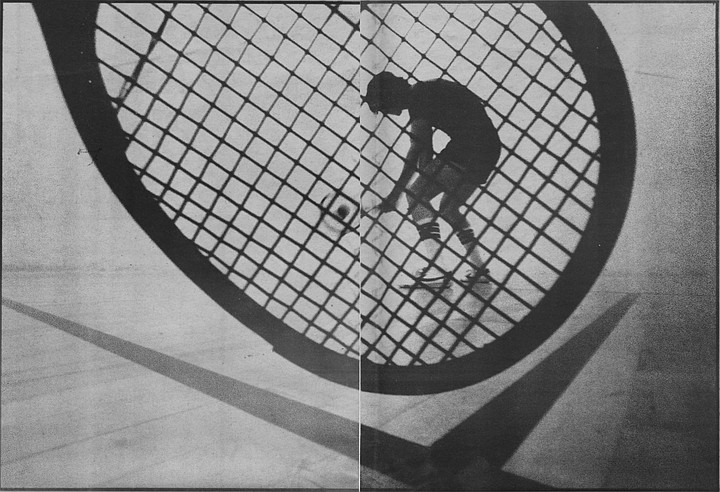
Bud Muehleisen is emphatic in his assessment of the game’s failure on television. Muehleisen says that the problem was the ball. “The ball,” he says, “is too fast.” The ball manufacturers, in their zeal to embellish the quick-action nature of the game, had formulated balls that shot around the court like bullets. Muehleisen agrees with Bud Held that racquetball's appeal lies in that speed. Young people, Held says, enjoy the action.
By Glenn Wallace, July 25, 1985 | Read full article
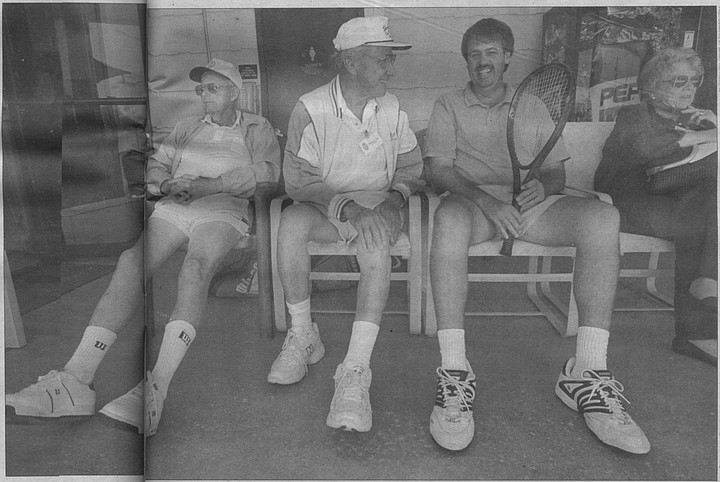
San Diego has played its own role. Great weather, ample facilities, and the region’s heavily middle-class economy depolarize tennis, blunting country club snobbery, and turning tennis instead into just another California outdoor activity. San Diego created a wonderful environment for local competition. “Morley Field, that was it, baby, the place,” says Billie Jean King. Amid so many players and such fine facilities, it was easy to improve and enjoy the game without ever journeying too far.
By Joel Drucker, Aug. 23, 2001 | Read full article

After six years of hard use, Jesse sold the boat to my brother Aidan, who paid $600 cash under the condition that Jesse let him keep her on the dock at Coronado Yacht Club. Aidan paid the monthly storage fee and sailed the boat for several years. He and Jesse remained close friends throughout this period, and they often sailed together onboard the Laser. They took turns at the tiller while exploring the bay and pounding cheap domestic beer.
By Evan Douglas, May 26, 1994 | Read full article
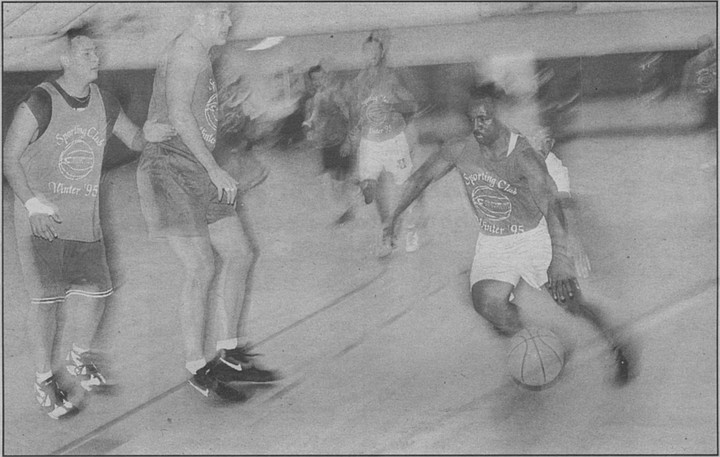
Maybe sneak out of work around 11:15, tell the receptionist Big Meeting, Won’t Be Back Until Two Or So, and see who’s runnin’ at the downtown Y at noon on what is probably the oldest floor in the county! The Y is an echoing box where you can’t shoot from some spots because a banked oval running track overhangs the corners. Players sometimes call out “Rookie!” when a new player’s shot hits the ceiling.
By Peter Jensen, April 6, 1995 | Read full article
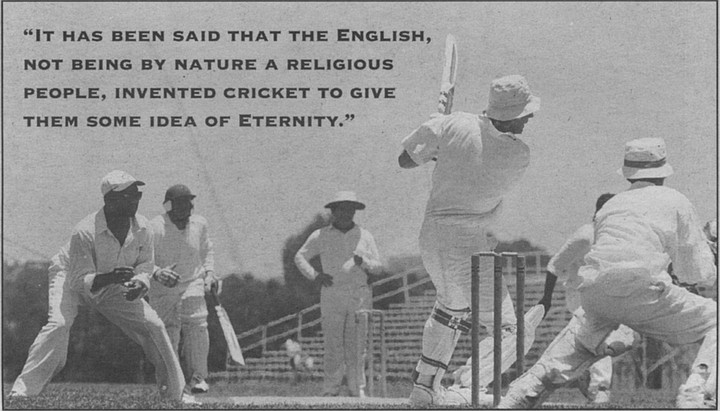
He was struck by the orderliness of the English game, where one quickly learns not to argue with the umpire or one’s captain, and by the difference between the crudeness and violence of soccer spectators and the politeness of the cricket fans. When he left the Air Force and was relocated back to San Diego, he assumed his playing days were over. But John McMillan, a New Zealander and UCSD professor, told David’s wife about SDCC.
By Tim Brookes, Sept. 14, 1995 | Read full article
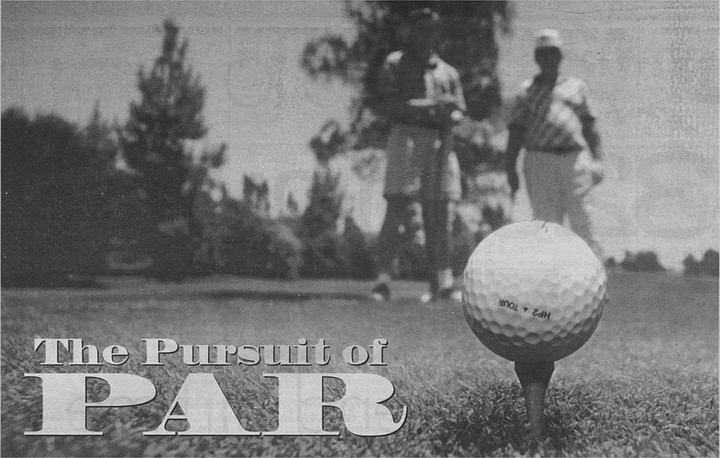
Logan suggests that golf's natural setting is also an attraction. “Golf courses are beautiful,” he explains. “They treat the environment well, and they usually are a habitat to nature, not only flora but fauna — all kinds of wildlife. I play in Lake Wildwood in Northern California, and there are deer, partridges, pheasants, wild turkeys, and ducks. Early morning, you get out there and you don’t know what you are going to run into right on the course.”
By Ernie Grimm, Aug. 22, 1996 | Read full article


Norm was still alive. From photographs Annie had sent, he identified the skiff as his own creation by the unique placement of ribs just aft of the center thwart. He sent Annie an old photo of Fury and her sister boat Joy side-by-side, taken around 1940. He also put Annie in touch with Fury's first owner, Vic Dixon. Vic had remembered selling Fury to Yank GIs stationed in Brisbane during the early ’40s.
By Nicholas Wolff, Aug. 21, 1997 | Read full article

While Otis holds on to the rabbit’s rear, Scott places his left hand on its back and, grabbing the head with the right, pulls and twists to break its neck and end its suffering. The dying rabbit twitches its hind legs, pummeling Otis in the process. But the young hawk sinks his talons deeper into the cottontail and covers his kill with his wings. “That’s called mantling. He’s doing that to hide it from other birds and animals.”
By Ernie Grimm, March 18, 1999 | Read full article

If there was any play that might have been controversial, it was Smith's third goal in the final game. Catching the disc in the air outside the goal mouth, like a fullback he cradled the disc toward the plane of the goal line. This game situation, where a player running hard toward the goal mouth leaps in the air and lands in the goal, has not been sorted out in the minds of most players and refs.
By Alan Peterson, July 15, 1999 | Read full article

I apply the lesson. It feels funny, like I’m not putting enough effort into it, but the results are good. My disc soars in level flight and floats four feet above the ground for what seems like an unnaturally long time. It’s that boating quality that I’ve admired in Pierson’s shots all day but haven’t been able to emulate until now. Unfortunately, I aimed the shot too far left. On the 16th hole, I overcorrect.
By Ernie Grimm, Feb. 17, 2000 | Read full article

Bud Muehleisen is emphatic in his assessment of the game’s failure on television. Muehleisen says that the problem was the ball. “The ball,” he says, “is too fast.” The ball manufacturers, in their zeal to embellish the quick-action nature of the game, had formulated balls that shot around the court like bullets. Muehleisen agrees with Bud Held that racquetball's appeal lies in that speed. Young people, Held says, enjoy the action.
By Glenn Wallace, July 25, 1985 | Read full article

San Diego has played its own role. Great weather, ample facilities, and the region’s heavily middle-class economy depolarize tennis, blunting country club snobbery, and turning tennis instead into just another California outdoor activity. San Diego created a wonderful environment for local competition. “Morley Field, that was it, baby, the place,” says Billie Jean King. Amid so many players and such fine facilities, it was easy to improve and enjoy the game without ever journeying too far.
By Joel Drucker, Aug. 23, 2001 | Read full article

After six years of hard use, Jesse sold the boat to my brother Aidan, who paid $600 cash under the condition that Jesse let him keep her on the dock at Coronado Yacht Club. Aidan paid the monthly storage fee and sailed the boat for several years. He and Jesse remained close friends throughout this period, and they often sailed together onboard the Laser. They took turns at the tiller while exploring the bay and pounding cheap domestic beer.
By Evan Douglas, May 26, 1994 | Read full article

Maybe sneak out of work around 11:15, tell the receptionist Big Meeting, Won’t Be Back Until Two Or So, and see who’s runnin’ at the downtown Y at noon on what is probably the oldest floor in the county! The Y is an echoing box where you can’t shoot from some spots because a banked oval running track overhangs the corners. Players sometimes call out “Rookie!” when a new player’s shot hits the ceiling.
By Peter Jensen, April 6, 1995 | Read full article

He was struck by the orderliness of the English game, where one quickly learns not to argue with the umpire or one’s captain, and by the difference between the crudeness and violence of soccer spectators and the politeness of the cricket fans. When he left the Air Force and was relocated back to San Diego, he assumed his playing days were over. But John McMillan, a New Zealander and UCSD professor, told David’s wife about SDCC.
By Tim Brookes, Sept. 14, 1995 | Read full article

Logan suggests that golf's natural setting is also an attraction. “Golf courses are beautiful,” he explains. “They treat the environment well, and they usually are a habitat to nature, not only flora but fauna — all kinds of wildlife. I play in Lake Wildwood in Northern California, and there are deer, partridges, pheasants, wild turkeys, and ducks. Early morning, you get out there and you don’t know what you are going to run into right on the course.”
By Ernie Grimm, Aug. 22, 1996 | Read full article
Comments